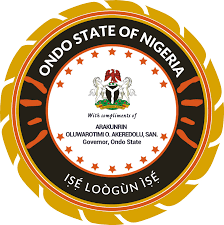Agriculture
Increasing Food Price Triggers Inflation to 2-Year High

From Joy Okeke, Lagos
The rising cost of food in the country has pushed the inflation rate, a two years high of 13.7 per cent as prices of food rose by 16.67% for the 13th consecutive months.
The National Bureau of Statistics (NBS) said this in its September report, released on Thursday, explaining that the food supply chain has been ensnaring terribly on all sides.
Some of the factors that contributed to the spike in food prices include: the closure of the land borders since 2019 ensures that cheap food was barricaded out if the country.
Secondly, President Muhammadu Buhari’s order to the central bank to stop providing foreign exchange for food and fertilizer imports again cut short the inflow of cheap food.
Thirdly, the on-going raid by herders on farms also ensured that food became very scarce in the country.
The government had, however, said that the policies were geared towards self-food sufficiency, the immediate impact has left Nigerian with fixed salaries deflated while food prices continue to soar.
The spike in prices of food items, such as bread, cereals, potatoes, yam and other tubers, meat, fish, fruits and oils and fats, accounted most for the rise in inflation in September, the National Bureau of Statistics (NBS) said in its Consumer Price Index September 2020.
Daily Asset findings showed that a big basket of Oval-shaped tomatoes now sells for an average of N17, 000, indicating a 6.3 per cent rise in the price when compared to N16, 000 recorded in September.
A big bag of Melon increased by 22.4 per cent, to sell for an average of N46, 500.
Also a carton of Turkey increased by 5.8 per cent to sell for an average of N18, 333, compared to an initial average of N17, 333 recorded in September 2020, and carton of full Chicken that was sold for an average of N14, 000 two weeks ago, now sells for an average of N14, 500, representing a 3.6 per cent increase in price.
A big bag of Bush mango seed, popularly known as “Ogbono” now sells for N100, 000 at Mile-12 market.
A 5.3 per cent increase compared to N95, 000 reported earlier, while a big bag of dry Onions increased by 48 per cent to sell for an average of N55, 500, compared to an initial average of N37, 500.
Furthermore, a big bag of new Onions rose by 60.8 per cent selling at N41, 000 as against the N25, 500 it was initially sold for.
A bag of Pepper increased by 9.7 per cent to sell for an average of N17, 000, while a medium-sized bag sells for an average of N9, 000 – a 38.5 per cent increase in price.
Also, a big basket of Sweet Potato now sells for an average of N13, 500, from an initial average of N14, 000 – a 3.6 per cent reduction in price, while the price of a big basket of Irish Potatoes reduced by 29.5 per cent to sell for an average of N21, 500, compared to N30, 500 recorded in September.
For rice, 50kg of Royal Stallion Rice still sells for an average of N30,333, Mama Gold (N29,750), Caprice (N29,667), and Mama’s Pride (N25,500).
A big sized bag of Brown Beans still sells for an average of N33, 000.
Consumer prices rose 13.7 per cent from a year earlier, compared with 13.2 per cent in August, the National Bureau of Statistics said in a report published on its website on yesterday.
Goldman Sachs Group Inc. expects Nigeria’s inflation to accelerate in coming months, peaking close to 18 per cent year-on-year in the second quarter of 2021. The main source of price pressure has been pass-through from the recent naira depreciation, analysts at the bank said in a research note.
The food index rose by 16.7 per cent from a year earlier, while costs increased 1.9 per cent in the month, the most since June 2017.
The International Monetary Fund expects Nigeria’s economy to shrink 4.3 per cent.
The central bank in September said inflation is likely to rise to up to 14.15 per cent at the end of December due to supply shocks as a result of the pandemic, which has curtailed economic activity and created disruptions.
Prices rose in September across the range of goods and services, rising more in cities than in rural areas, the statistics office said.
“The urban inflation rate increased by 14.31 per cent (year-on-year) in September 2020 from 13.83 per cent recorded in August 2020, while the rural inflation rate increased by 13.14 per cent in September 2020 from 12.65 per cent in August 2020,” its report said.
Agriculture
Nigeria Misses out on $180bn Global Cassava Processing Market

By Torough David , Abuja
With a current production capacity of 62.69 million and holding the position of the largest producer of cassava in the world, Nigeria is missing out of the $180 billion global cassava processing market.
The country’s cassava value chain, although hampered by local consumption, has the potential to drive economic growth and attract foreign investments.
Stakeholders in the value chain say that with improved yield, provision of credits for farmers and accessibility of lands, the country could tap into the $180 billion processed market.
The conversion of fermented cassava into high-quality products—such as High-Quality Cassava Flour (HQCF), cassava starch, bioethanol, and sweeteners (glucose and sorbitol) — could aid in cushioning forex scarcity in Nigeria.
“Nigeria, as the world’s largest cassava producer, generates approximately 18 percent of global cassava output but captures merely 2 percent of the crop’s vast $180 billion global processing market,” said Olayinka David-West, dean of Lagos Business School, Pan-Atlantic University.
David-West reiterated that despite cassava’s substantial production scale—feeding millions daily through staple foods like Garri and fufu and sustaining the livelihoods of approximately 14 million smallholder farmers—over 90 percent of Nigeria’s cassava harvest remains relegated to low-value and food-grade uses.
“This significantly constrains farmer incomes and limits broader economic impact,” she added.
Escalating global demand for industrial cassava products offers Nigeria a significant market opportunity to expand beyond traditional uses, she says.
According to the International Trade Centre, global cassava derivative exports have grown over 20 percent annually in recent years, underscoring robust international demand for industrial cassava products.
Meanwhile, Olayinka Majekodunmi, partner at Boston Consulting Group, emphasised that cassava in its HQCF form serves as a strategic alternative to imported wheat flour, essential for Nigeria’s bakery and snack sectors.
This is imperative as Nigeria imports 98 percent of its wheat needs, amounting to an average of $2 billion annually.
“HQCF presents substantial import substitution potential, potentially unlocking a $600 million market. Currently, utilisation remains low at 5 percent, yet scaling to 20 percent is achievable, given existing facilities are underutilised by approximately 50 percent,” he said.
On the investment opportunities in cassava starch, he explained that it is commonly used in paper, textile and pharmaceutical industries.
“Domestic production significantly lags demand, which grows at approximately 5.2 percent annually, representing a substantial market gap. Capturing this gap could realistically secure an additional $485 million, bolstering local manufacturing capabilities.”
But to conveniently tap into this pool of wealth, stakeholders argue that production must first of all be ramped up.
How production can be bolstered
Although current cassava yields average 6 tons per hectare compared to a global benchmark of 25 tons per hectare. The Food and Agriculture Organisation (FAO) estimates that bridging this yield gap could boost production by an additional 11 million metric tons.
“Key investments are needed in superior, disease-resistant varieties, mechanization, agronomic training, and post-harvest handling improvements to reduce losses,” David-West said.
She said cassava processing costs in Nigeria remain high, often quadrupling in off-grid areas due to unreliable power supply.
Hence, most processing facilities operate 50 percent below capacity, further lowering efficiency.
According to her, this calls for strategic investments in modern processing technologies, renewable energy infrastructure, and agro-industrial clusters.
Echoing her words, Majekodunmi said access to affordable finance remains a major challenge. He urged the development of tailored financial instruments such as patient capital and concessional loans, coupled with securing long-term off-take agreements, which will mitigate risks.
Stakeholders believe that the country has what it takes to drive value addition in the sector, but it requires intentional efforts to bolster yield per hectare and production capacity.
Key industrial derivatives
Among cassava derivatives, four key products present immediate high-growth opportunities, collectively representing a market of approximately $2 billion:
High-Quality Cassava Flour
HQCF serves as a strategic alternative to imported wheat flour, essential for Nigeria’s bakery and snack sectors.
With Nigeria importing roughly 98 percent of its wheat consumption—valued at approximately $2 billion annually—HQCF presents substantial import substitution potential, potentially unlocking a $600 million market.
Currently, utilization remains low at 5 percent, yet scaling to 20 percent is achievable, given existing facilities are underutilized by approximately 50 percent.
Industrial starch: Widely used in sectors such as paper, textiles, pharmaceuticals, adhesives, and food additives, local cassava starch offers significant competitive advantages.
Domestic production significantly lags demand, which grows at approximately 5.2 percent annually, representing a substantial market gap.
Capturing this gap could realistically secure an additional $485 million, bolstering local manufacturing capabilities.
Sweeteners (Glucose and Sorbitol)
Nigeria’s rapidly growing sweetener market (18 percent annual growth) remains predominantly import-dependent (95 percent imported), driving up costs for manufacturers.
Cassava-based sweeteners offer a cost-effective alternative, priced considerably lower than imported sucrose.
Companies such as Coca-Cola have indicated strong interest in sourcing locally, underscoring this segment’s immediate scalability and representing a clear $500 million market opportunity.
Bioethanol
Nigeria imports about 26 percent of its ethanol for beverages, pharmaceuticals, and fuel blending, exposing the economy to price volatility.
Cassava-based bioethanol offers significant economic advantages, costing approximately $0.06 per liter less than imported ethanol.
Given Nigeria’s existing ethanol market valued at $420 million, substantial expansion opportunities exist for investors to scale local production.
Agriculture
Don Pushes for Sustainable Environmental Practices

A lecturer at Ahmadu Bello University (ABU), Zaria, Prof. Wisdom Japhet has called on Nigerians to adopt practices that protect the environment and promote sustainable development.
Japhet made the call on Tuesday in Abuja on the sidelines of a training workshop on environmental standards.
The workshop was organized by the Sustainable Procurement Environmental and Social Standards Enhancement Centre of Excellence (SPESSECE ABU), in collaboration with the World Bank.
Japhet, who also serves as the Director of SPESSECE ABU, emphasised the importance of environmental awareness in developmental planning.
He said the goal of the training was to instill in participants the knowledge and capacity to integrate environmental considerations into development projects.
“The aim is to build capacity in the area of sustainable development.
“Every developmental activity must be sustainable. We are training participants to consider environmental impacts and provide consultancy for projects that may have negative consequences on the environment,” he said.
He added that certification in environmental management was becoming increasingly essential, as global standards now prioritise it.
“It’s very important for Nigerians to be both environmentally and socially aware. When you harm the environment, you harm people by extension,” Japhet stated.
He called on stakeholders in both public and private sectors to participate in the SPESSECE training and become certified.
According to him, the programme also equips participants with tools to anticipate environmental issues in projects, including planning for mitigation strategies.
“Most developmental activities have some environmental impact, and if those are not addressed, they cannot be considered sustainable. We must develop, but not at the expense of the environment,” he said.
On the issue of noise pollution, Japhet noted that everyone had a role to play in protecting the environment.
Also speaking, Dr Soala Martyns-Yellowe, an environmental practitioner, said that the SPESSECE project aimed to improve Nigeria’s capacity to manage environmental, social, and procurement standards.
He said the initiative was crucial as Nigeria strived to meet its development goals.
“The idea is to mainstream environmental and social frameworks into national systems,” he said.
Martyns-Yellowe urged relevant agencies to intensify awareness campaigns about the dangers of noise pollution and enforce existing regulations to mitigate its effects.
| ReplyReply allForwardAdd reaction |
Agriculture
Ondo to Partner FUTA on Wildlife Conservation

The Ondo State Government said it will partner with the Federal University of Technology, Akure (FUTA), on the restoration and development of OSSE River Park to international standards for eco-tourists attraction.
Permanent Secretary, Ministry of Agriculture and Forestry, Segun Odusanya stated this during a meeting with the Department of Forestry and Wood Technology and Department of Ecotourism and Wildlife Management of the institution.
Odusanya, who said that there was a need to partner national and international organisations, explained that the state government welcomed technical and logistic support to enhance the park’s restoration and conservation.
“The OSSE River Park is the state’s only conservation park which provides a habitat for wild animals, but it requires attention due to human activities,” he said.
Also, Mr Olushola Ibosiola, Director of Wildlife Conservation, Parks, and Ecotourism in the ministry, emphasised the importance of wildlife conservation and ecotourism, saying that the park covered 285.79 km²
According to him, the benefits of ecotourism include revenue generation, economic incentives, awareness, and research support.
Ibosiola, however, acknowledged the challenges of ensuring sustainable practices and balancing economic benefits with conservation goals.
Prof. Oluseyi Fabiyi and Prof. Adekunle Ogunjinmi, from the two departments in FUTA, expressed their willingness to collaborate with the government to harness the park’s potential.
The duo said the international bodies were willing to provide support for wildlife conservation and ecotourism development.
They promised to schedule a visit to assess the park’s condition and determine the level of intervention required.




























